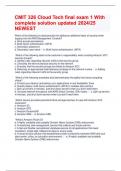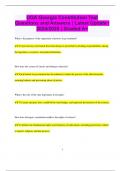Exam (elaborations)
Solutions for Entrepreneurial Finance, 7th Edition Leach (All Chapters included)
- Course
- Institution
Complete Solutions Manual for Entrepreneurial Finance, 7th Edition by J. Chris Leach, Ronald W. Melicher ; ISBN13: 9780357442043....(Full Chapters included Chapter 1 to 16)...1. Introduction to Finance for Entrepreneurs. 2. Developing the Business Idea. 3. Organizing and Financing a New Venture. ...
[Show more]












